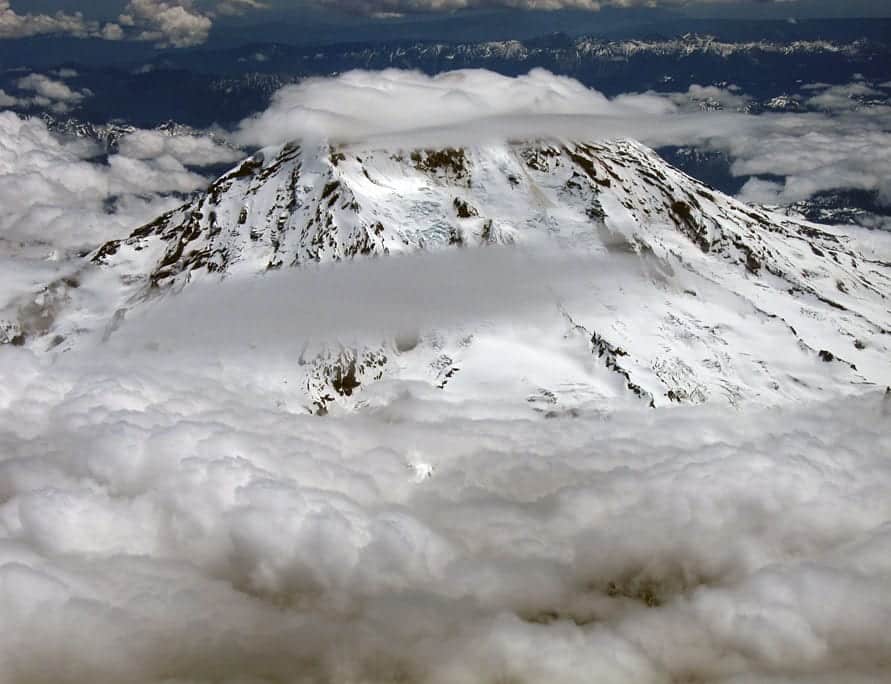Basics Of Precipitation
Precipitation is another word for rainfall, snow, sleet, and hail. This is when water droplets/ice crystal fall from clouds. The section below will explain the rest.
Table of Contents
- First Steps: Formation of Rainwater
- Precipitation Itself (raining)
- Why is it so cold higher up in the atmosphere?
- Cloud Types
First Steps: Formation of Rainwater
Heat from various sources, including (and especially) the sun causes water on the surface of the earth contained in the ocean, rivers, lakes, ponds, and even puddles in your back yard to evaporate.
Evaporation is the conversion of liquid water into water vapour, which rises up into the atmosphere where temperatures are very low (below 0 °C which is the freezing point of water), and then the opposite happens: The water vapour is cooled and converted back into liquid water, and some of it freezes into tiny ice particles. This process forms clouds, the rest of the material that clouds consist of is particles of dust, smoke and salt. [Source]
The reason why some of the water droplets in clouds don’t freeze is because they are very tiny, and small water droplets are the most difficult to freeze. [Source]
The “frost” or “fog” that you are seeing below is actually many tiny water droplets, which appear to be a single film because they are so tiny.

Precipitation Itself (raining/snowing)
After clouds form, the water droplets and ice crystals they are made of fall out of the sky, and some of that ice melts as it falls into the warmer environment lower to the ground (because the warmth causes it to melt, of course).
When precipitation occurs, it is water droplets that fall out of the sky, snow is made of small frosty ice crystals. These two come from clouds. Hail is a form of precipitation but it does not fall from clouds.
Keep in mind that not all clouds are like this. Fair weather cumulus clouds do consist of water droplets, but they rarely cause precipitation.
Cloud movement: You may witness precipitation because the wind blew clouds that were created elsewhere towards your area. Clouds are normally blown across the ocean by the wind.
Hail Formation
Hail is formed when raindrops are blown up into a freezing cold part of the atmosphere by updrafts (an updraft is like a wind) and then supercooled due to the cold environment. The supercooled rain drops come into contact with pieces of ice/dust and freeze on them when they make contact. More and more raindrops keep freezing onto the tiny stones and as they freeze on top of each other, the hailstones become bigger. [Source]

Supercooling
When water is supercooled, that means that it was cooled to the temperature at which it would usually freeze, but it doesn’t freeze until disturbed or it comes into contact with particles that it can freeze onto.
Example: If a stone falls into a container of supercooled water, the supercooled water that comes into contact with it freezes onto it, becoming ice, and then the supercooled water in contact with that ice then freezes on top of that ice, and that ripple effect continues until all of the water is frozen.
[Source]
Why is it Colder Higher Up in the Atmosphere?
This is because the air at higher altitudes is less dense, due to the fact that pressure is lower at higher altitudes. A lower air density means that each of the particles of air are far from each other. In other words, the air molecules are more spaced out. This also means that there is less air per cubic metre at higher altitudes. Density is measured in grams per cubic metre.
My point: The less dense air is, the less the air particles collide with each other, simply because they are further away from each other. Collision generates heat. Therefore: As altitude decreases, air particles collide with each other more, and hence they generate more heat, making themselves warmer. [Source – US Geological Survey]

Also consider that the atmosphere is made of multiple layers. Analogy: Imagine a stack of 9 books. The 9th book is at the bottom of the stack, therefore, it bears the most weight, the 8th book which is just above the 9th, bears less weight, but it still bears more weight than the books above it.
The same rule applies to the atmosphere, and it is because of gravity. The lower parts of the atmosphere bear the most weight and are ‘compressed’ the most because of that, which is why their densities are higher.
The air closer to the earth’s surface is subject to a greater gravitational pull than the air higher up (remember that as you go further up in the atmosphere, it is further away from the surface of the earth, which is what is pulling the atmosphere down). All of the ‘compression’ mentioned is due to gravity. Gravity is the reason why weight exists.

Cloud types
Cumulus (Sometimes called “fair weather clouds”)
This is a family of three types of clouds which don’t cause precipitation: humilis, mediocris, and congestus. They are composed of liquid water. They are classified as low-level clouds because their height above the ground is less than 6,500 feet. They are, however typically only 2,000 – 3,000 feet off the ground.
They are called fair weather clouds because they are seen on days of fair, sunny weather, unlike other clouds such as the nimbostratus, which are dark and cause precipitation. Cumulus clouds normally don’t rain, but sometimes, the congestus type briefly causes precipitation.
[Source – Georgia Tech]





